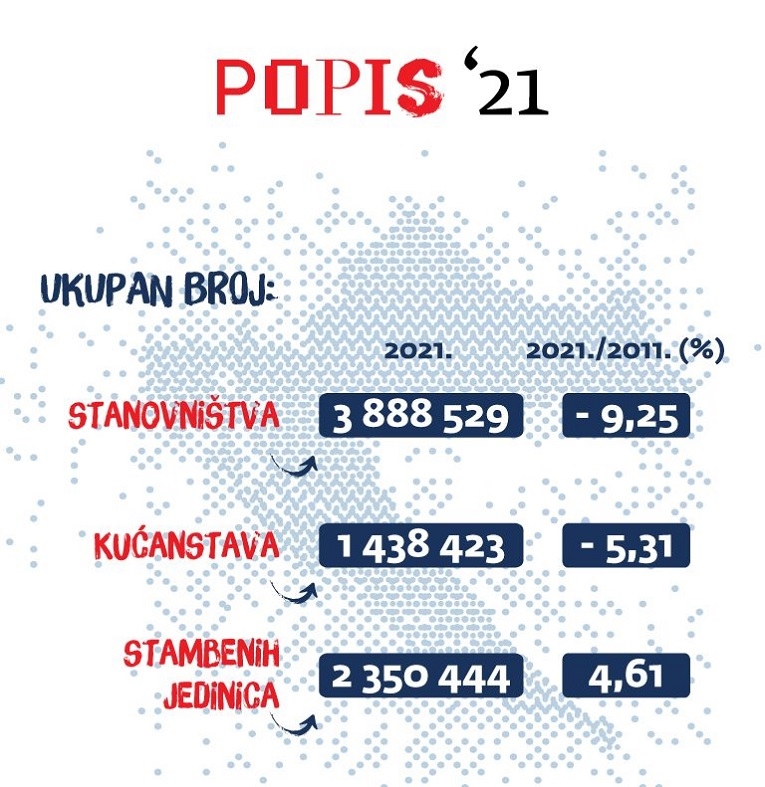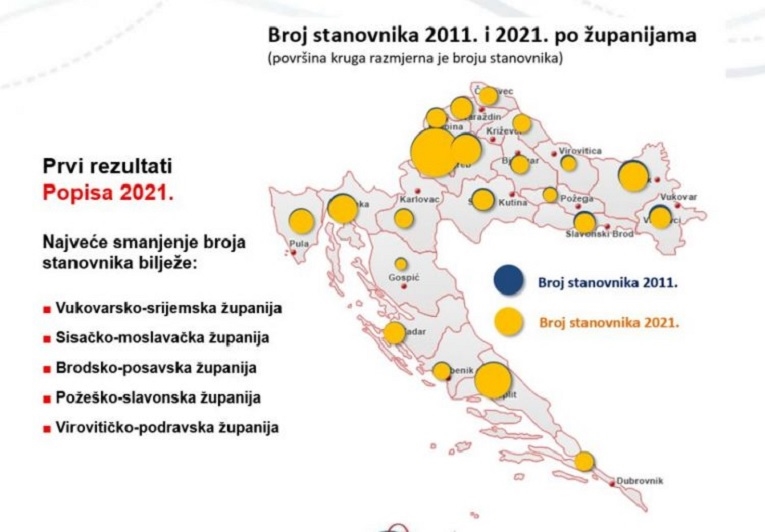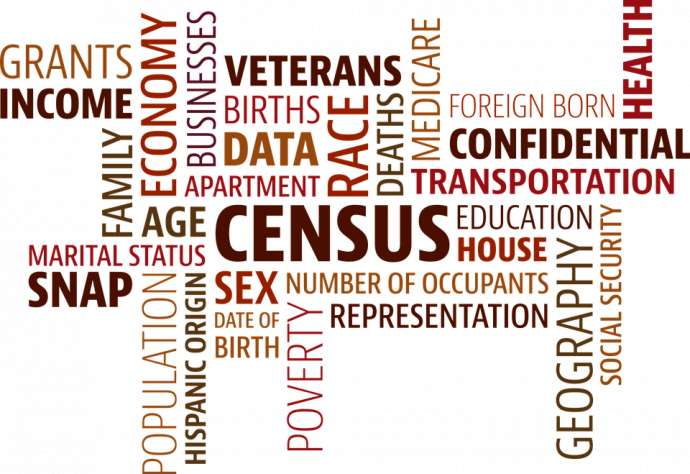The Central Bureau of Statistics has published the first results of the 2021 Census. According to the 2011 Census, there were 4,284,889 inhabitants in Croatia. Demographer Andjelko Akrap, who has been warning about bad demographic trends for years, told Index last night that he was sure that the new census would show that it has less than four million inhabitants.
It should be reminded that Croatia was hit by a large wave of emigration after joining the EU, especially in 2014 and 2015, so it is to be expected that we will have a far smaller population. In the last wave of emigration, Croatian citizens mostly chose Ireland and Germany as places for a new life.
The head of the CBS, Lidija Brković, is the first to speak.
According to the first results published on the CBS website, Croatia has fallen to 3,888 million inhabitants.
“The census covers the area within the borders of the Republic of Croatia and does not refer to emigration. It was conducted as of August 31 this year,” Brkovic said.
“According to the first results, the total number of inhabitants is 3,888,529. There are 1,480,423 households. There are 2,350,444 housing units,” she added.
“When we compare that with 2011, the number of inhabitants decreased by 9.5%, ie by more than 360,000 inhabitants,” said Brković, adding that the number of housing units increased by more than 4%.
“By counties, the smallest decline is in Zagreb, followed by Dubrovnik-Neretva and Zadar. The biggest decline is recorded in Vukovar-Srijem, the number decreased by more than 19%, followed by Sisak-Moslavina County and Brod-Posavina with a decline of 17.53%,” she said.
“As for the number of households, it fell by more than 5% in the Republic of Croatia, mostly in Sisak-Moslavina, then Vukovar-Srijem, and then Lika-Senj,” she added.
“The smallest decline is in Zagreb, then in Zadar County and Split-Dalmatia County,” said Brkovic.
In 10 years, Croatia has lost almost 400,000 inhabitants
“The number of apartments has increased in almost all counties, it has grown the most in Dubrovnik-Neretva,” she added.

(Source: Index.hr)
“In the last 10 years, the number of inhabitants has decreased by 396,000,” the head of the National Assembly summed up once again, adding: “The decrease in the number of inhabitants is a consequence of population movements and natural increase.”
“These are the first results from the list that are still subject to change. The final results will be known when the data processing is completed. All results are available on the CBS website,” Brkovic said.

Journalist questions are raised.
Are there any age data? Why is the number of apartments growing and the number of inhabitants falling?
“We cannot comment on the results, these are the first results that are still subject to minor changes. It is clear that we have to wait for the final results,” it was said at the press conference.
“As for the age structure, this is the next phase of the work and we will publish it in the following table, age and gender structure. So we don’t have that yet, these are just the first results on the total population,” it was said.
“As for migration data, it will be available in late June this year.”
When will the information on nationality be published?
“We can’t say that now. First these basic numbers go, then the gender and age structure, and then the rest. It should go every couple of months.”
“No one on the planet can guarantee that any census has ever included all housing units. We can guarantee that we have visited all addresses, knocked on all doors and based on whether the enumerator found someone, whether that person was elsewhere. “We can’t say that for sure. Don’t get it in the headline, it’s clear to everyone that it’s impossible to say 100%.”
Is it known what the total cost of the Census is and whether all enumerators are paid?
“They are planned in the budget in the amount of 170 million kuna. At the moment we do not have a detailed financial report. What I can say is that the fees have been paid to all participants in the census,” said Brkovic.










